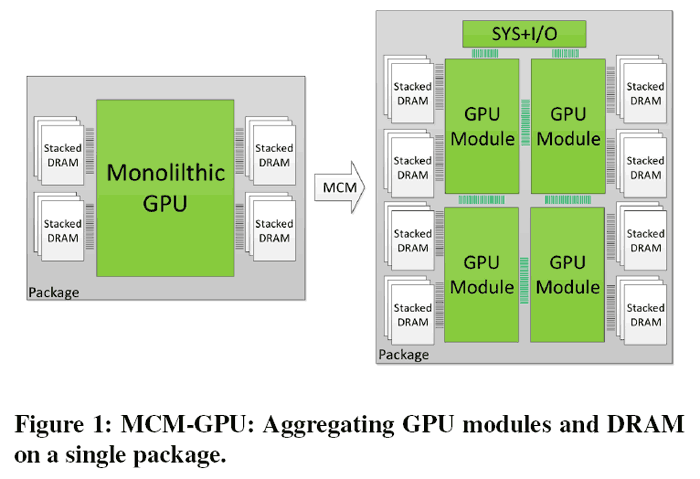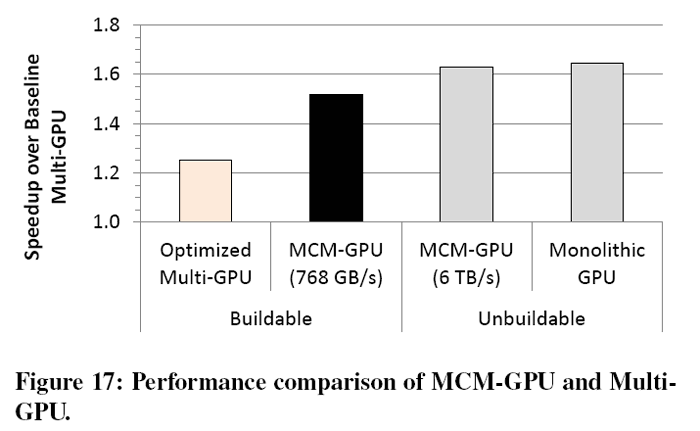Researchers from Arizona State University, Nvidia, the University of Texas, and the Barcelona Supercomputing Centre have published a paper (PDF) that looks at improving GPU performance using Multi-Chip-Module (MCM) GPUs. The team see MCM GPUs as one way to sidestep the deceleration of Moore's Law and the performance plateau predicated for single monolithic GPUs.
Transistor scaling cannot happen at historical rates anymore and chipmakers are staying with certain manufacturing processes longer but optimising performance in other ways. As "the performance curve of single monolithic GPUs will ultimately plateau," researchers are looking at how to make better performing GPUs from package-level integration of multiple GPU modules.

It is proposed that easily manufacturable basic GPU Modules (GPMs) are integrated on a package "using high bandwidth and power efficient signalling technologies," to create multi chip module GPU designs. To see if such a proposal is worthwhile and can bear fruit worth picking, the research team has been evaluating designs using Nvidia's in-house GPU simulator. Theoretical performance comparisons against multi-GPU solutions were also made.
MCM GPUs could do wonders for increasing the SM count and many GPU applications "scale very well with increasing number of SMs," observe the scientists. The research team looked at the possibilities of a 256 SMs MCM-GPU in the paper, and are pleased by its potential. Using the simpler GPM building blocks and advanced interconnects this 256 SM chip "achieves 45.5% speedup over the largest possible monolithic GPU with 128 SMs," assert the researchers.

In further tests the 256 SM equipped MCM-GPU "performs 26.8% better than an equally equipped discrete multi-GPU, and its performance is within 10% of that of a hypothetical monolithic GPU that cannot be built based on today’s technology roadmap," concluded the research paper.
Research to reality delays mean we shouldn't expect MCM GPU graphics cards for enthusiasts from Nvidia for a couple of hardware generations.













